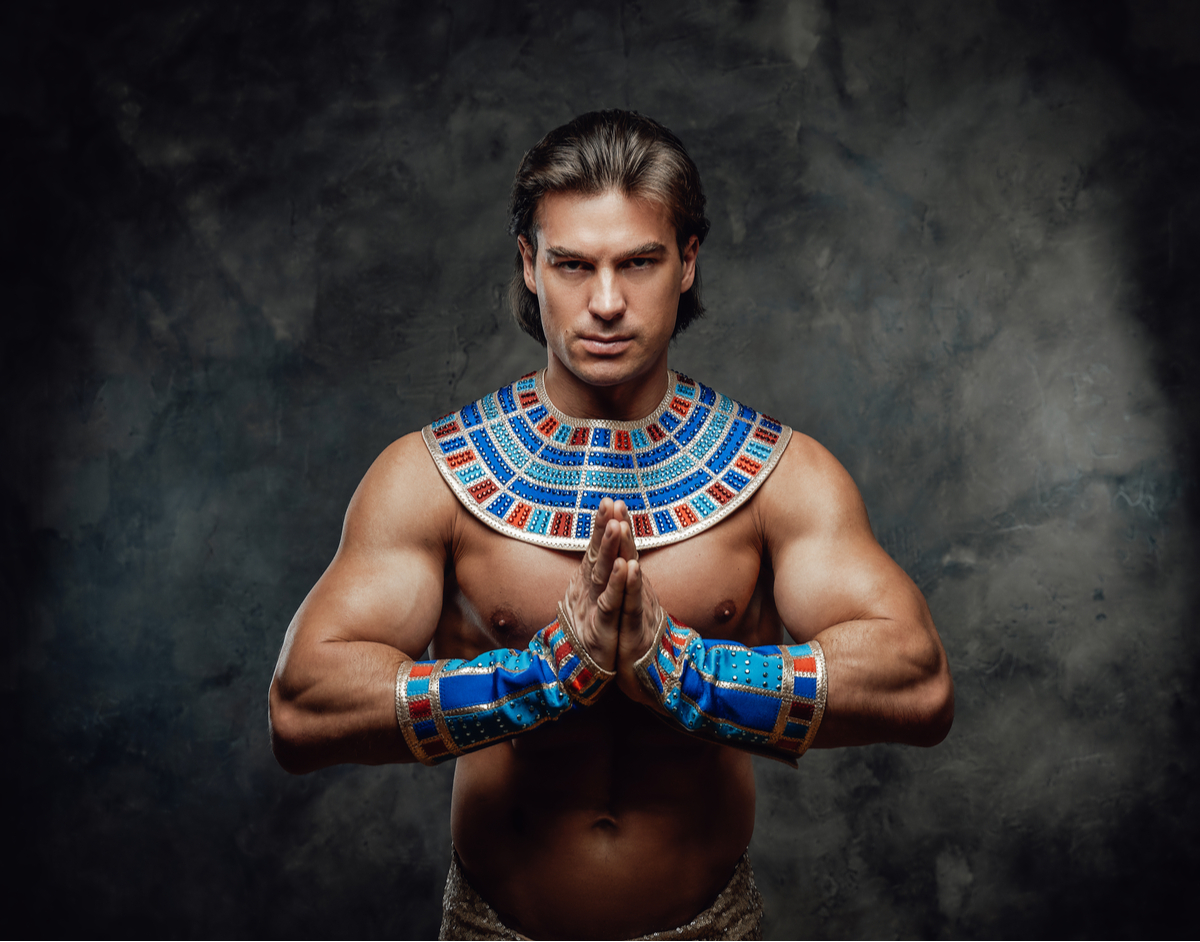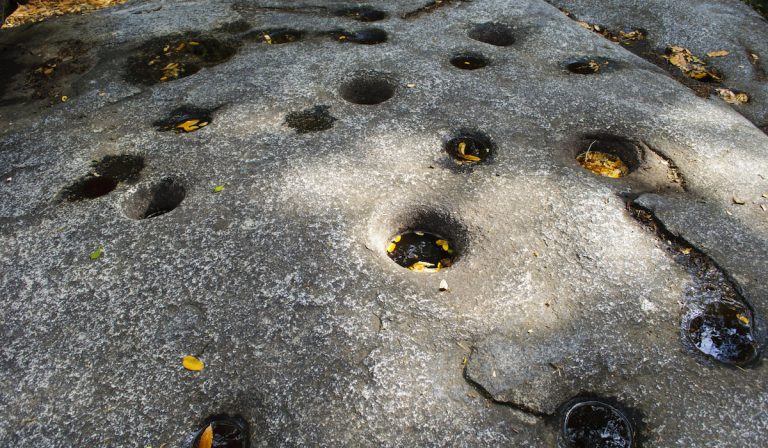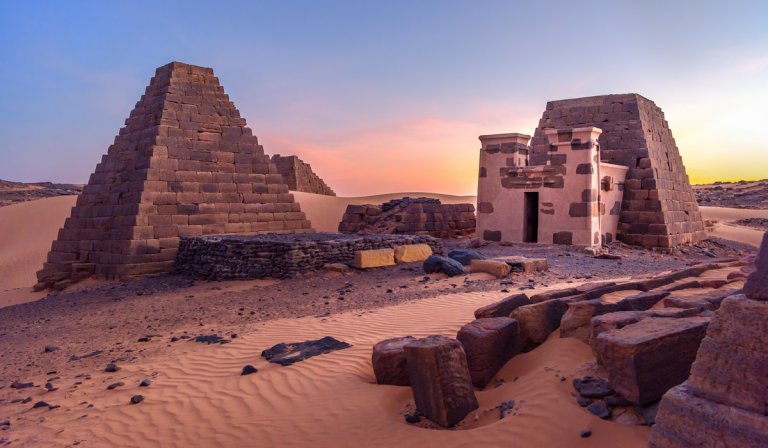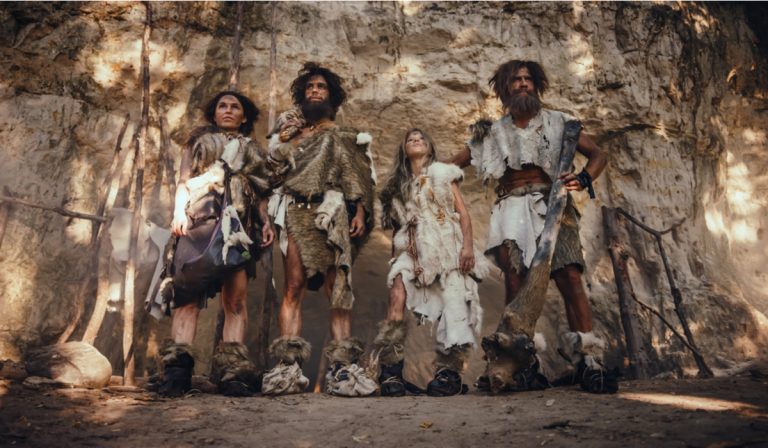10 Interesting Ancient Egyptian Clothing Facts to Know
Due to their hot climate, ancient Egyptians wore clothes made from lightweight materials. It was hot for most of the year, so they often opted to wear as little clothing as possible.
In colder months, however, they covered themselves more.
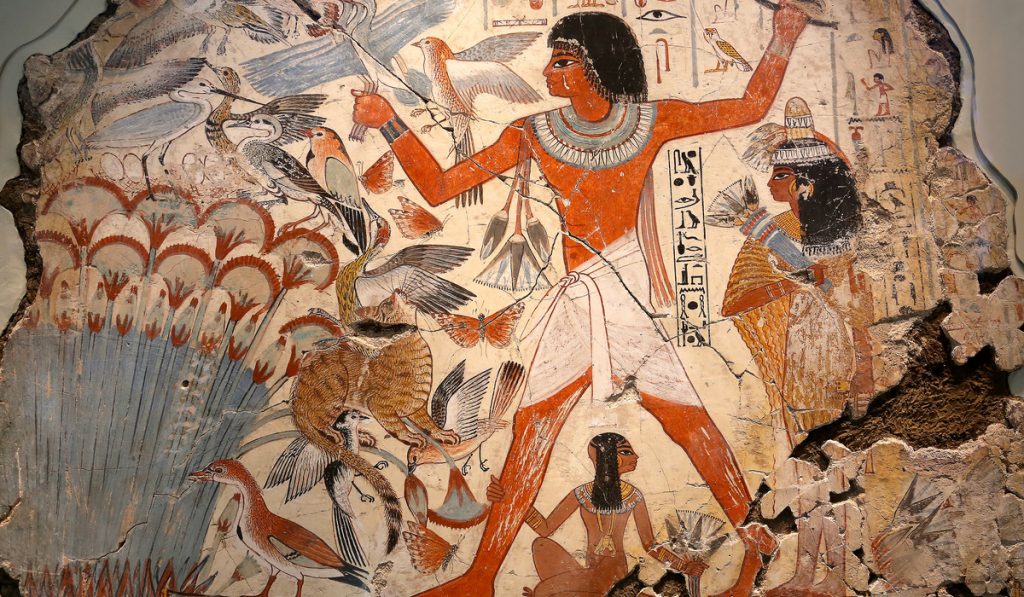
Although the primary purpose of clothing in ancient Egypt was comfort, they didn’t sacrifice beauty for it. Ancient Egyptians still adorned their clothes with several colors, jewels, and precious metals.
In this article, we discuss ten interesting facts about ancient Egyptian clothing.
Interesting Ancient Egyptian Clothing Facts to Know
They Made Their Clothing From Linen
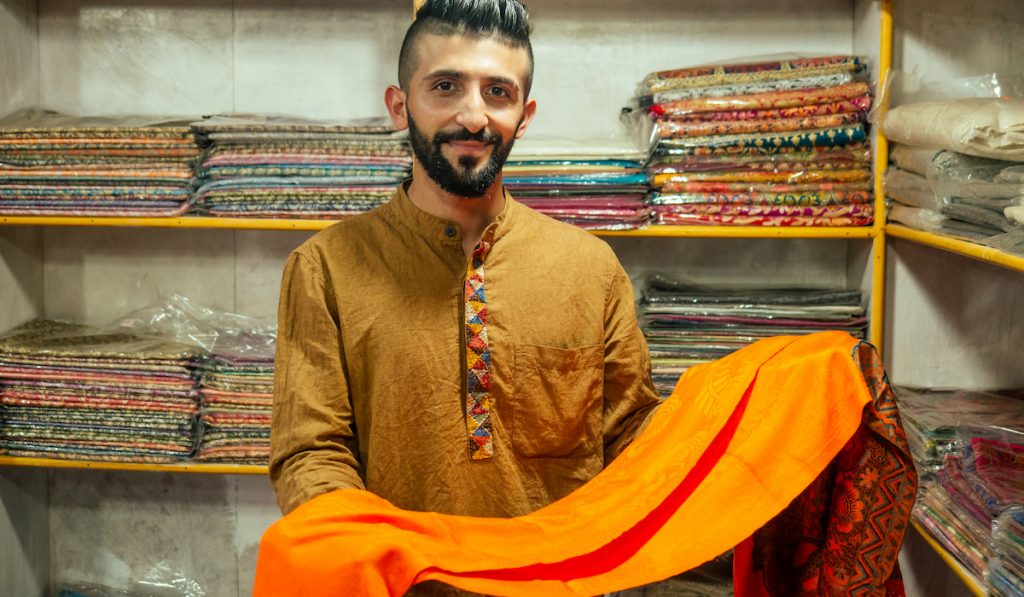
Ancient Egyptians used linen to make most of the clothes they wore. Linen is a lightweight and cool material, ideal for hot climates.
The most common linen color choice was white. But the ancient Egyptians also dyed the linen yellow, blue, and red.
The type and quality of the linen used depended on the person’s wealth. The wealthy Egyptians sometimes used silk for clothing, while those at the opposite end used wool or cotton.
The linen required little sewing since they wrapped their clothing around them and fastened it with a belt.
Men Wore Wrap-Around Skirts of Various Lengths, Similar to Kilts
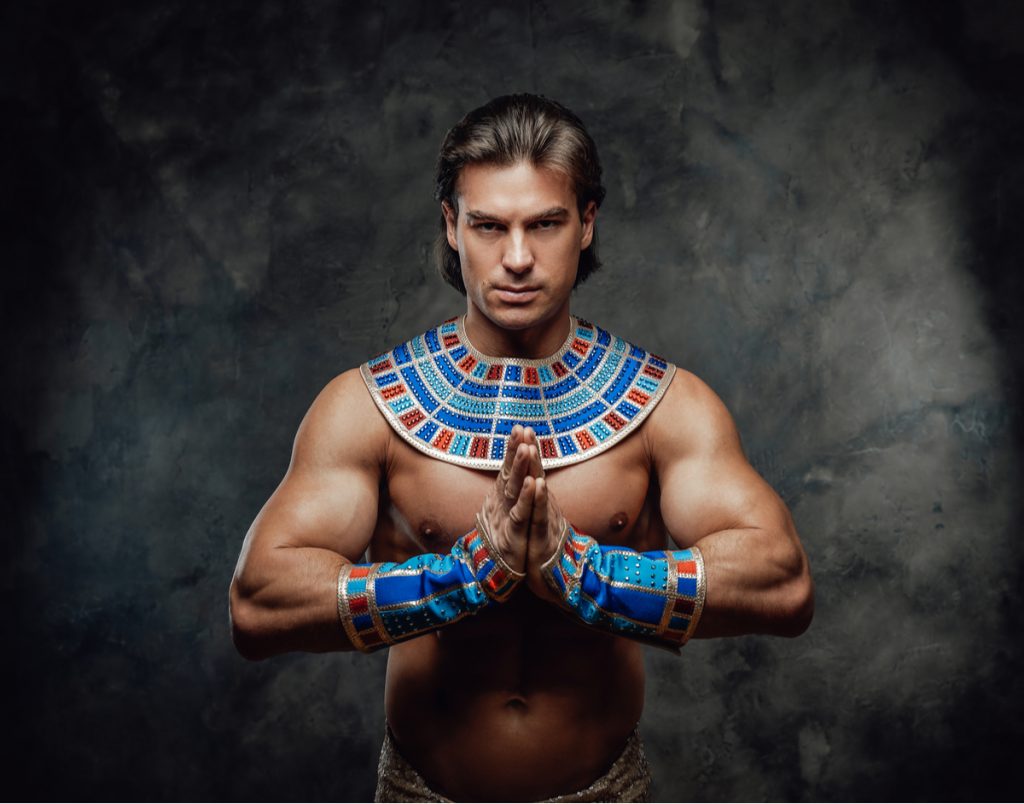
The clothing style for the rich and poor was generally the same. The men wore a wrap-around skirt made from linen. The skirt was similar to a kilt, and they called it shendyt. The preferred color was white since it gave them a cleaner appearance.
Sometimes they wrapped the skirt above their knee, usually in the summer months. At other times, they wore the skirt closer to their ankles.
Throughout history, the length of the shendyt varied.
For example, men wore the shendyt above their knees during the Old Kingdom. During the Middle Kingdom, men wore their skirts longer, closer to their calves. During the New Kingdom, men wore tunics with sleeves and pleated petticoats.
Women Wore Full-Length Skirts With Shoulder Straps
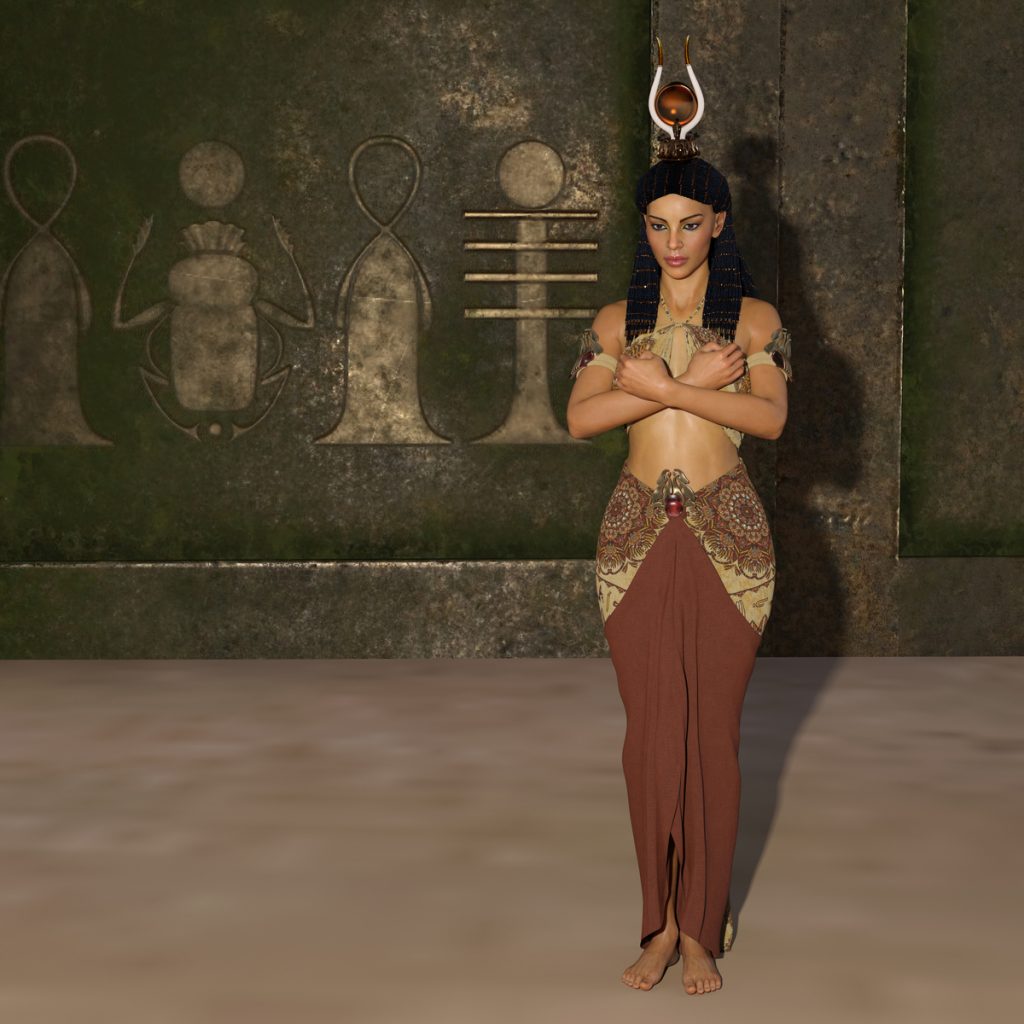
Women wore ankle-length dresses with one or two shoulder straps. Sometimes the dresses didn’t cover their breasts, but they did cover their chests.
The dresses varied in style. While some had sleeves, others didn’t.
The materials for the dresses were always simple and usually white, regardless of the era. Since their clothes were typically plain, they had knots or pleats folded into them for decoration, especially the wealthy women.
In the Old Kingdom, the pleating was horizontal. In the Middle Kingdom, the pleating was intricate: both horizontal and vertical. And in the New Kingdom, the pleating was just vertical.
Sometimes the top of the dress had feathers or beads across the chest area. Women also wore capes or robes over their dresses. The robes and capes were often pleated as well.
Pharaohs and Priests Wore Leather
Apart from linen, another common material in ancient Egypt was leather, but it was generally used for coats.
However, the pharaohs and priests often wore clothing made with leather from leopard skins.
Some pharaohs used a lion’s tail as a belt.
They Fashioned Flax into Thread to Weave into Linen
Ancient Egyptian clothing came from the flax that grew along the banks of the river Nile. Famers started planting flax due to the increased demand for clothing in ancient Egypt.
After harvesting the flax, ancient Egyptians would soak it in water to soften the plant fibers.
Once the fibers were soft enough, they would comb and beat them into a thread to make linen.
They then spun the linen and placed it on a loom. The final step was to weave the linen into garments.
The men were responsible for harvesting, soaking, and beating the flax. The women were responsible for spinning the flax and making it into garments.
Clothing Was a Form of Social Distinction
In ancient Egypt, how a man dressed symbolized his status. The material used to make your garments depended on how wealthy you were.
The garments worn by higher-class citizens like pharaohs and priests were translucent. Linen and silk were the most common fabrics for the upper class.
Working-class men wore loincloths made from wool, cotton, and sometimes linen.
Like men, wealthy women also wore clothes made from lightweight fabrics. The higher the position of the woman, the thinner the material.
Children Didn’t Wear Clothes Until Age 6
Ancient Egyptian children didn’t wear any clothes until age six. At age six, they wore enough clothing to protect them from the sun.
However, they didn’t wear any regular clothes until they reached puberty. Once they hit puberty, they could start dressing like adults.
The clothing styles for ancient Egyptian children depended on their sex. Boys wore the same style as men, while girls wore the same as women. In colder months, they wore cloaks and wraps.
Children also wore jewelry like the adults, especially hair accessories, bracelets, and collars.
Boys 12 and under had most of their hair shaved, except for a pleated section on the side of their head.
Many Ancient Egyptians Went Barefoot
Although ancient Egyptian clothing included shoes, many of them went barefoot. Footwear in ancient Egypt was a luxury item.
Those who had access to footwear, like the pharaohs, queens, and courtiers, wore sandals made from leather. The poor made their sandals from woven reeds like papyrus or palm.
All Ancient Egyptian Classes Wore Jewelry
Ancient Egyptians thought jewelry made them look appealing to the gods, so they wore as much as they could. Even the poor ensured they put on as much jewelry as possible.
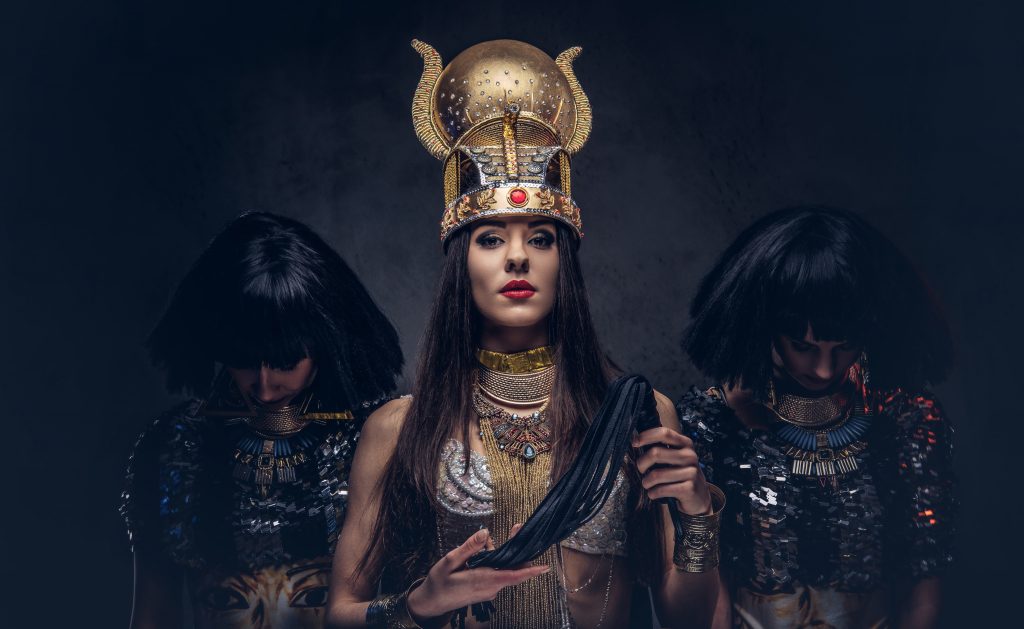
Both men and women wore pendants, necklaces, armbands, jeweled neck collars, bracelets, anklets, and fancy buttons. They also wore finger rings with seals on them. At the start of the New Kingdom, some had their ears pierced and wore earrings.
The amount and style of jewelry an individual wore symbolized their level of wealth and social status.
When a person belonged to a higher class, he would wear jewelry made with carnelian, turquoise, and lapis-lazuli. On the other hand, people of lower status wore jewelry made from glass or pottery beads.
The most popular metal for making jewelry was gold. It always remained shiny and was not difficult to mine or work.
Both Sexes Wore Makeup to Protect Their Skin
In ancient Egypt, both sexes wore makeup. They wore makeup to protect their skin from the harsh desert climate.
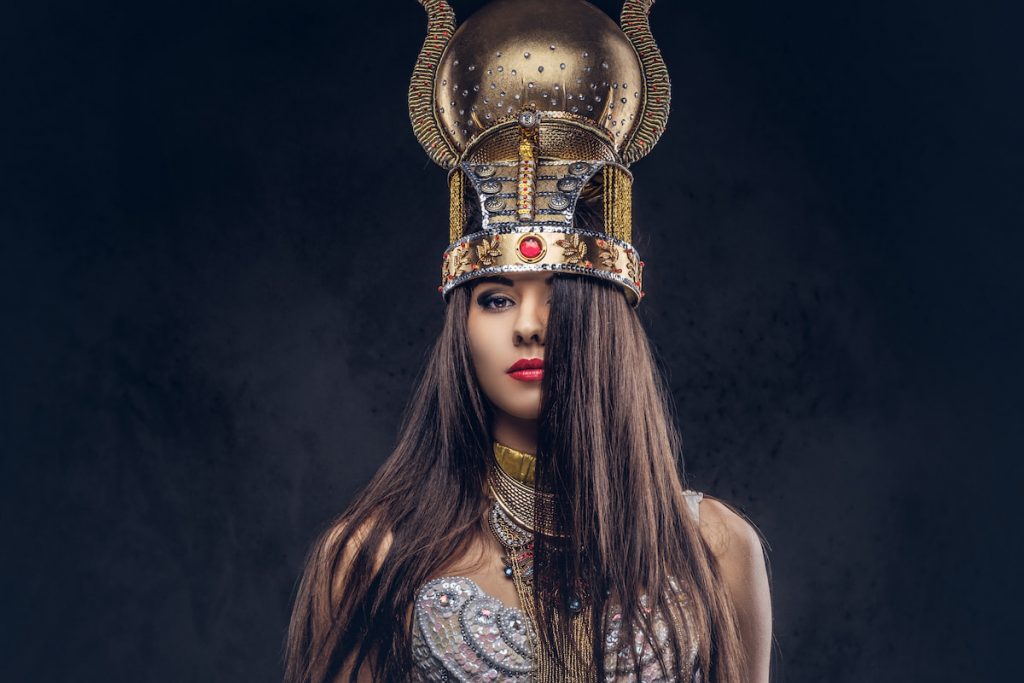
The most notable element of Egyptian makeup was their black eyeliner.
The eyeliner was from a substance called black kohl, which protected them from the sun’s glare. They also used black kohl to darken their eyelashes and eyebrows.
The Egyptians used eyeshadow above their eyelids in green or blue shades.
Both men and women colored their nails and lips with henna dye. They also used henna dye to decorate their skin and color their hair.
They also used a red powder called “crew” on their lips and cheeks if they didn’t use henna.
Although everyone used henna, only lower-class citizens got tattoos. It was not part of the fashion of higher-class citizens.
Unfortunately, several harmful substances in some of the makeup would often cause illness and poor health.
Resources:
- https://www.coolaboo.com/world-history/ancient-egypt/ancient-egyptian-clothing/
- https://starshinetours.com/facts-about-clothing-used-in-ancient-egypt-egyptian-clothes/
- http://www.ancient-egyptian-facts.com/Ancient-Egyptian-Culture-Facts/Ancient-Egyptian-Clothing-Facts.html
- https://www.twinkl.com.ng/teaching-wiki/ancient-egyptian-clothes
- https://www.historyforkids.net/egyptian-clothing.html
- https://owlcation.com/humanities/Clothing-Used-In-Ancient-Egypt
- https://www.ducksters.com/history/ancient_egypt/clothing_of_ancient_egypt.php
- https://www.ancient-egypt-online.com/ancient-egypt-fashion.html
- https://www.archaeologynow.org/egypt-blog/blog-post-title-two-hz67c

